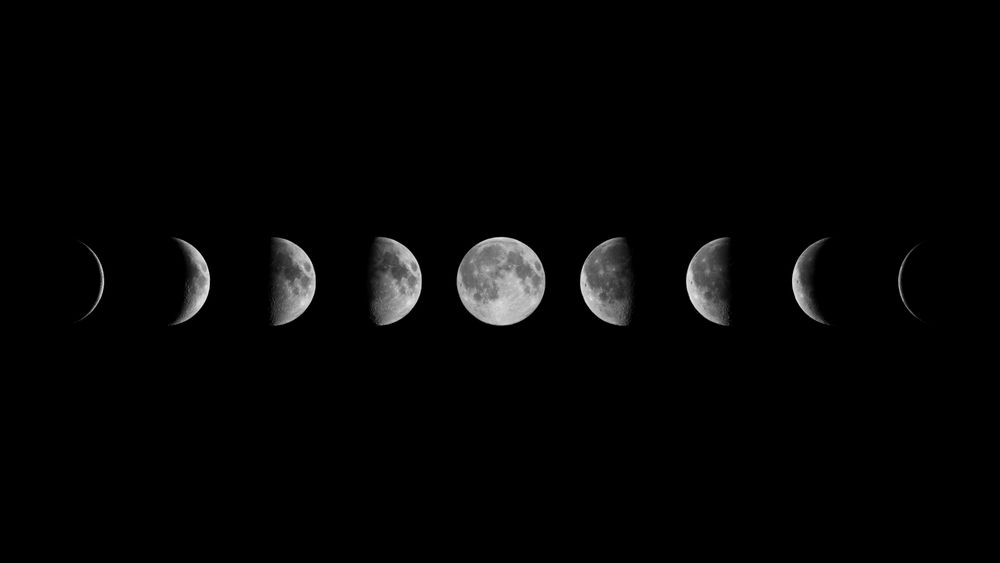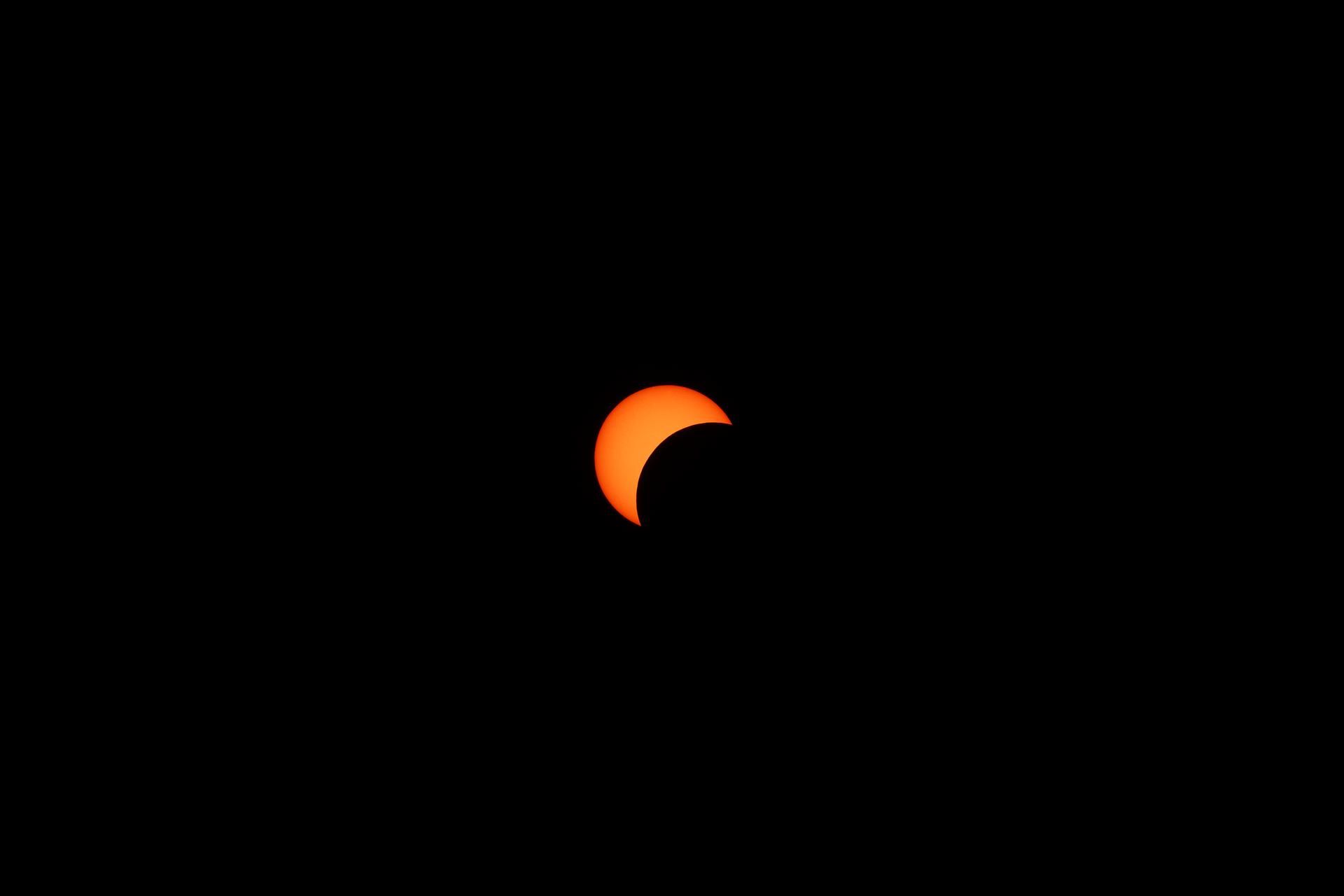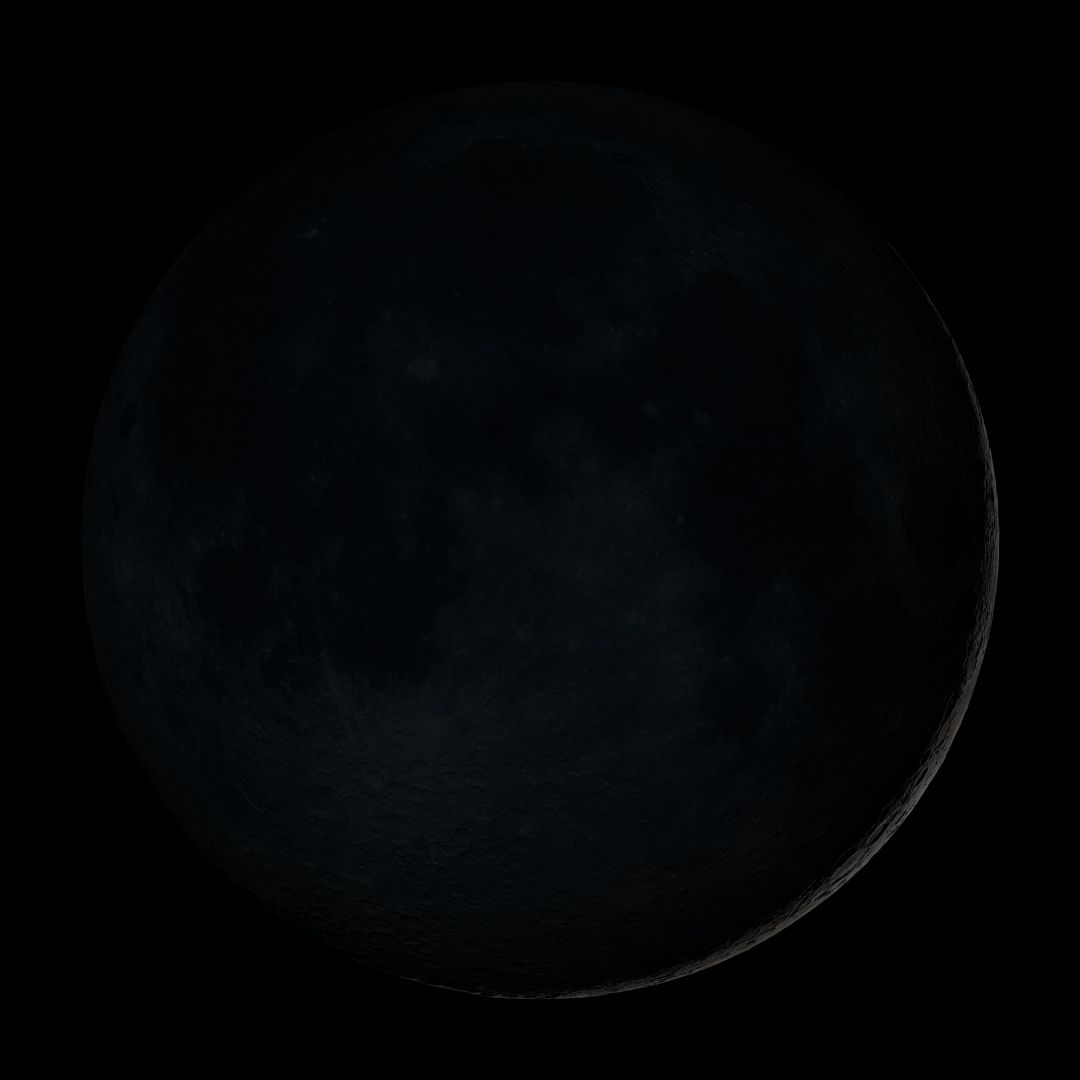There is a new moon every month, and occasionally, we can even see two new moons in a month. However, a “super” new moon isn’t that common and is set to grace our skies very soon. Here’s everything to know about it.
What Is a New Moon?
A new moon is one of the eight lunar phases. As the Moon orbits around the Earth, the amount of its sunlit side that we see changes during the lunar orbit, resulting in different moon appearances across a lunar month. Sometimes, the entire face of the Moon visible to us is brightly glowing. Other times, only a thin crescent is lit, and sometimes, the Moon seemingly goes dark. Eight of these different moon appearances are called lunar phases; the new moon is the first or invisible phase.
During a new moon, the Moon is positioned between the sun and the Earth, so the side facing the Earth is not illuminated, making it appear dark. While typically, you’ll be hard-pressed to make out the moon during a new moon, it becomes visible during a solar eclipse. This is because the Moon blocks the sun’s light during the eclipse, and the dark disk of the new moon becomes visible as it’s silhouetted against the bright sun.
Another fascinating phenomenon that makes the new moon slightly visible is Earthshine. A very faint glow can sometimes be seen because some of the sunlight is reflected from the Earth’s surface. Part of it reaches the dark new moon and then gets reflected to us.
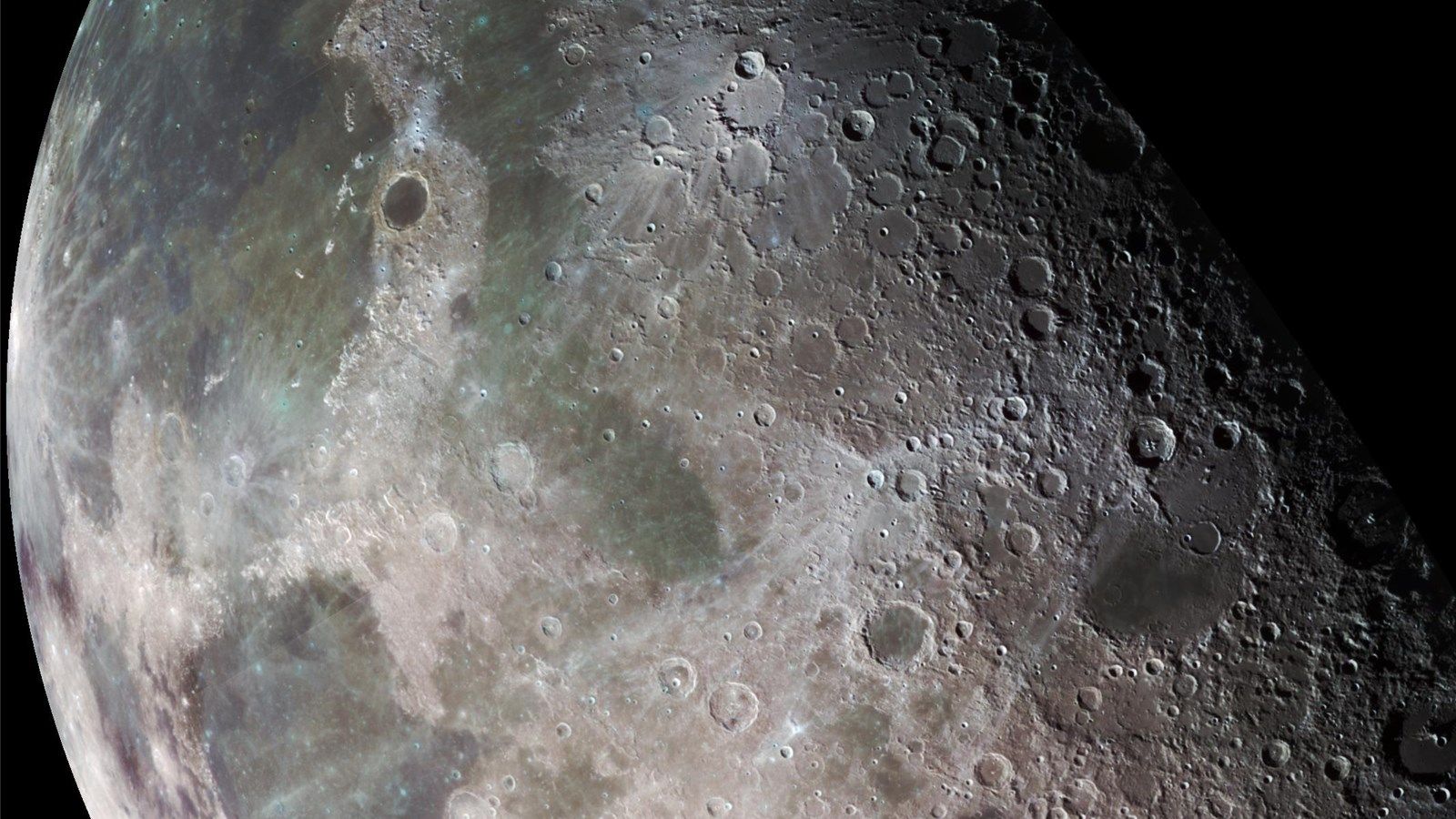
Related
The 6 Most Interesting Facts About the Moon
Earth’s only natural satellite is endlessly fascinating.
When Is the Next New Moon?
A new moon is a common astronomical event and takes place every lunar month (29.5 days). It’s even possible to have two new moons in a calendar month. As the lunar month is slightly shorter than most calendar months, if a new moon occurs at the very beginning of a calendar month, it’s possible to get another new moon at the very end of the same calendar month.
The next new moon is set to occur on March 29. For two new moons in a calendar month, you’ll have to wait till August 2027, with its first new moon on August 2 and the second on August 31. The second new moon in a calendar month is sometimes called a black moon. A black moon has multiple definitions, and the third new moon in an astronomical season with four new moons is also called a black moon.
What’s “Super” About the March 29 New Moon
The March 29 new moon is special. It’s the first of the so-called “super” new moons in 2025. It’s dubbed “super” because the moon will be almost at its perigee. The perigee is a point in the moon’s orbit at which it is closest to the Earth. The March new moon will be about 1.5 days before the lunar perigee, making this new moon among the closest to the Earth in the year.
The only new moon that will be closer to the Earth in 2025 falls on April 27, the same day as the lunar perigee. As a result, the April 27 new moon will also be a super new moon. There are no other super new moons in 2025.
It’s Also a Partial Solar Eclipse
As solar eclipses fall on a new moon, the March 29 new moon coincides with a partial solar eclipse, making the day even more exciting in an astronomical sense. The eclipse will begin at 08:50:43 UTC and end at 12:43:45 UTC. Different locations will get to see the eclipse at different times and for different periods.
The eclipse will be visible in parts of Europe, Russia, North/West Africa, parts of North America, South America, the Atlantic, and the Arctic.
In the US, you can watch the eclipse at locations in Connecticut, Maine, Maryland, Massachusetts, New Hampshire, New York, Pennsylvania, Vermont, and Virginia. The eclipse will be strongest in the Canadian provinces of Quebec and Newfoundland & Labrador, which will witness over 92% of the sun being eclipsed.
How to Watch the Super New Moon
Although the moon on a new moon is essentially invisible, you can’t really observe the moon itself. However, as the March 29 new moon coincides with a partial solar eclipse, you can see a silhouette of the moon as it passes in front of the sun.
Since you will essentially be observing a solar eclipse, it’s crucial to ensure your safety. Don’t look directly at the sun during the eclipse, and use special eclipse glasses or other safe viewing methods. You’ll also need a clear view of the sky.
Besides watching the eclipse and catching the new moon’s silhouette with your own eyes, you can observe the partial solar eclipse on a live stream. Many YouTube channels, including Timeanddate, will be streaming the event. NASA could also stream the eclipse on its NASA+ service or the YouTube channel.
Great Night for Stargazing
While you can catch the eclipse during the day, the night of a new moon is among the darkest you can get, making it an excellent time for stargazing and observing deep-sky objects.
If you plan to gaze at the stars, it’s best to look for spots away from light pollution. Places away from cities and rural areas typically make for great spots for stargazing. Do check the weather forecast beforehand to avoid getting stuck with cloudy skies. Give your eyes time to adjust to the darkness for the best viewing experience.
While you can see many bright stars and other celestial objects with the naked eye, a binocular can improve the experience, but you can take things to the next level with a telescope.
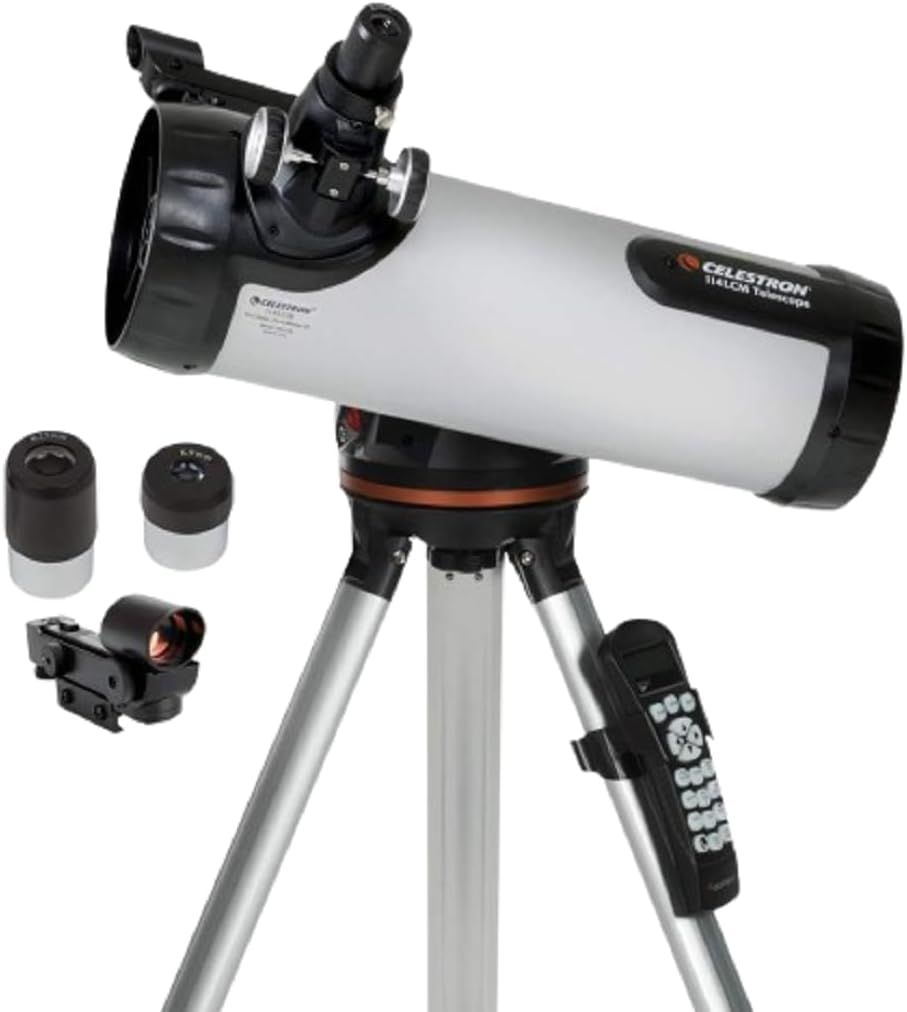
Celestron 114LCM Computerized Telescope
$380 $440 Save
$60
With a 4.49 inch (114mm) aperture and a 39 inch (1000mm) focal length, the Celestron 114LCM provides a maximum magnification of 269x—plenty to view the planets, the moon, and some deep-sky objects.
The mount is computerized, which makes finding and tracking objects of interest much easier. Once you calibrate it, you’re set!


